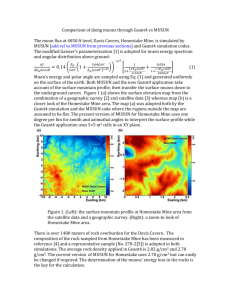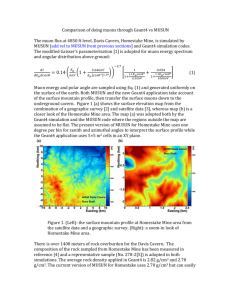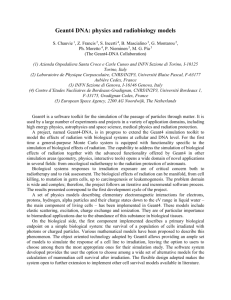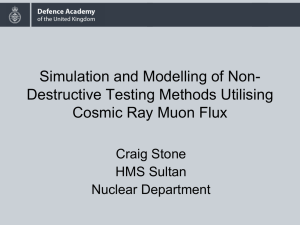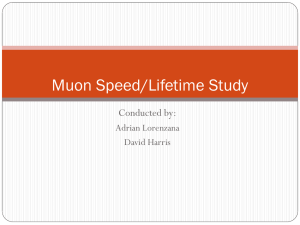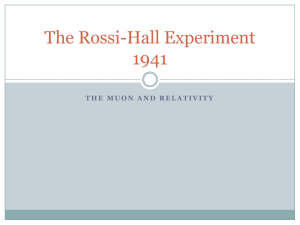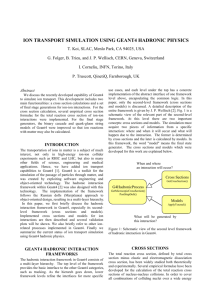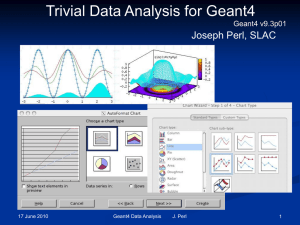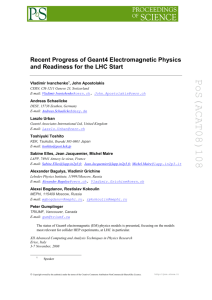Generating muons using Geant4 Cosmic ray muons needed as
advertisement
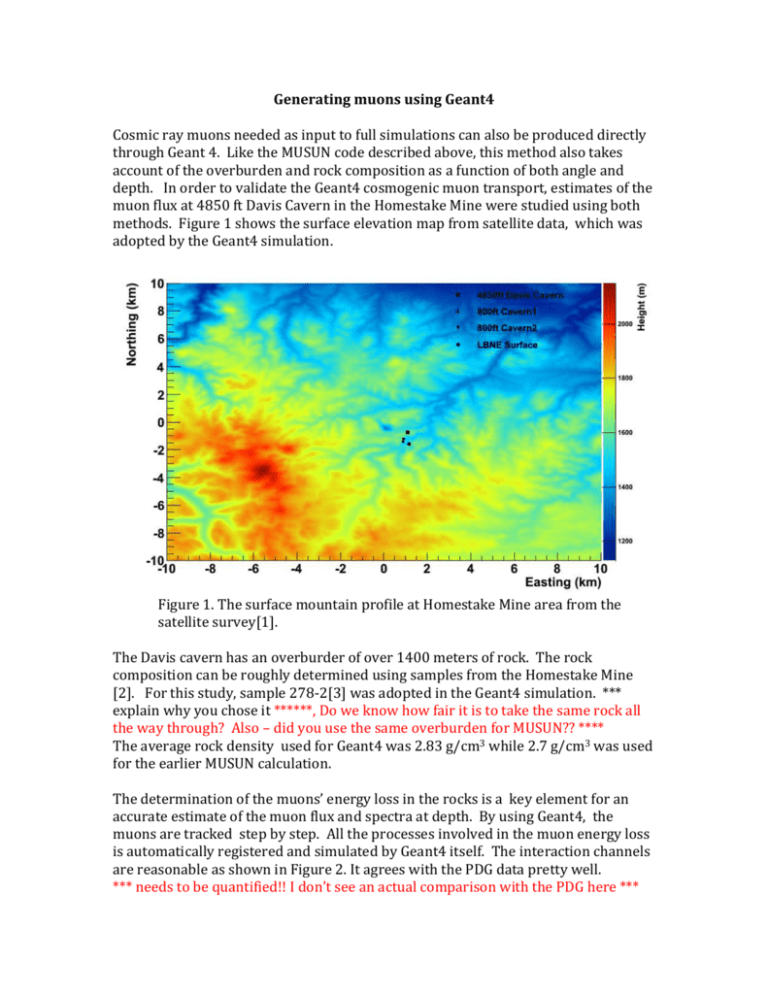
Generating muons using Geant4 Cosmic ray muons needed as input to full simulations can also be produced directly through Geant 4. Like the MUSUN code described above, this method also takes account of the overburden and rock composition as a function of both angle and depth. In order to validate the Geant4 cosmogenic muon transport, estimates of the muon flux at 4850 ft Davis Cavern in the Homestake Mine were studied using both methods. Figure 1 shows the surface elevation map from satellite data, which was adopted by the Geant4 simulation. Figure 1. The surface mountain profile at Homestake Mine area from the satellite survey[1]. The Davis cavern has an overburder of over 1400 meters of rock. The rock composition can be roughly determined using samples from the Homestake Mine [2]. For this study, sample 278-2[3] was adopted in the Geant4 simulation. *** explain why you chose it ******, Do we know how fair it is to take the same rock all the way through? Also – did you use the same overburden for MUSUN?? **** The average rock density used for Geant4 was 2.83 g/cm3 while 2.7 g/cm3 was used for the earlier MUSUN calculation. The determination of the muons’ energy loss in the rocks is a key element for an accurate estimate of the muon flux and spectra at depth. By using Geant4, the muons are tracked step by step. All the processes involved in the muon energy loss is automatically registered and simulated by Geant4 itself. The interaction channels are reasonable as shown in Figure 2. It agrees with the PDG data pretty well. *** needs to be quantified!! I don’t see an actual comparison with the PDG here *** MUSUN, on the other hand, calculates the energy loss and simulates the survival possibility for each muon. In this way, statistics can be rapidly accumulated. However, secondary particles generated in the rock are neglected. *** but this doesn’t matter does it??? Since we start Geant meters inside the rock ?*** The Figure 3 gives the comparison of energy distribution calculated using three different approaches – MUSUN, Geant4 and the Groom parameterization. The resulting absolute fluxes are 6.46e-9/cm2/s, 4.40e-9 /cm2/s and 4.36e-9 /cm2/s, respectively. The Figure 4 is the comparison of muon angular distribution obtained using MUSUN and Geant4 code, respectively. *** we need to compare and contrast and describe their differences *** Figure 2. Muon energy loss by different interaction channels in Geant4. Figure 3. Muon energy spectrum at 4850 ft Davis Cavern estimated by MUSUN, GEANT4 and Mei&Hime prediction[4]. Figure 4. Comparison of muon angular distribution at 4850 ft Davis Cavern estimated by MUSUN and GEANT4. [1] http://eros.usgs.gov/ [2] B.T. Jordan, Geochemistry tectonic setting of the Yates unit of the Poorman Formation (DUSEL bedrock) and other northern Black Hills amphibolites: geological Society of Americal Abstracts with Programs 41 (7) (2009) 271 [3] D.-M. Mei et al., Astroparticle physics 34(2010)33-39 [4] D.-M. Mei, A. Hime, Phys. Rev. D 73(2006)053004
